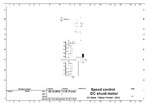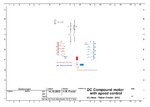Follow along with the video below to see how to install our site as a web app on your home screen.
Note: This feature may not be available in some browsers.
1. check its mechanically OK, bearings not seized, shaft not bent etc. 2. run it at full load . If it does not over heat its OK
Frank
Variable voltage from 0V to the max. voltage that's write on the name plate.Variable voltage from 0V to what Volts ?
DC voltage, because it's a DC motor.what Volts AC or DC to the armature ?
A shunt motor needs every time full field voltage, because if the field is gone and the armature has a voltage, the motor speed rise up until the motor will explode.What should happen when i slowly increase the voltage to the armature while the full voltage on field ?
If the windings have no short and you don't make a mechanical overload the motor can not overhead. To control this, measure the amperage.What is the confirmation that the motor is not overheat ? how to get to know that ?

